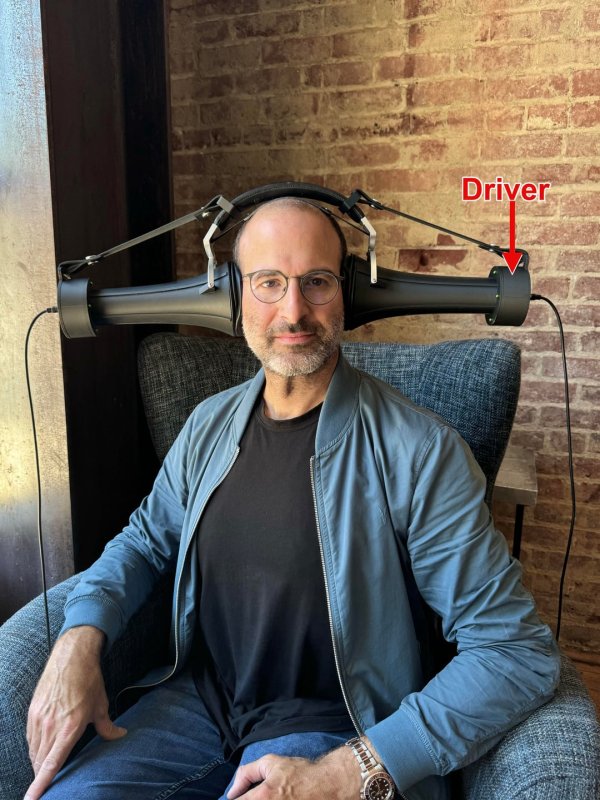Swen,
When you speak of the increased direct sound, does that have any impact on the way one should interpret sensitivity when comparing with the sensitivity measurement of a traditional cone/box speaker? I refer to tall linear arrays/panels where it is recommended that one increase that figure when comparing to traditional cone/box speakers because of the way speakers (like the Genesis 1) disperse that sound into the room differently than traditional cone/box speakers. I think it is something like the practical effect of this recommendation is to add an extra 3db to the standard sensitivity rating of a Genesis 1 vs a cone box speaker if one is to compare how loud each will sound at the same level of amplification (roughly of course),
Does this apply to large horns as well to this direct sound, or is this entirely different? Is it simply about the interaction with indirect/room reflections?
Dear LL21
That's a question that needs a bit more words to answer it properly.
The increased direct sound share from certain loudspeakers, such as horns or large linear arrays, does indeed influence how we interpret sensitivity measurements compared to conventional cone/box loudspeakers. Sensitivity, typically measured in dB SPL (sound pressure level) at 1 watt input at 1 meter, reflects how efficiently a loudspeaker converts electrical power into acoustic output. However, this metric assumes a standardized, often anechoic environment, which doesn’t fully capture real-world room interactions.
For Speakers like the Genesis 1, which utilize large linear arrays or panels, the recommendation to adjust sensitivity upward (e.g., by +3 dB) when comparing to cone/box loudspeakers stems from their unique sound dispersion. These systems often produce a more focused, planar wavefront with a higher direct sound component and reduced off-axis energy, leading to less contribution from room reflections. In a typical listening environment, this results in a perceived louder and clearer sound at the listening position compared to a cone/box loudspeaker with the same nominal sensitivity. The +3 dB adjustment accounts for this perceptual difference, as the direct sound dominates over diffuse room sound, making the system appear more efficient in practice.
Application to Large Horns
This concept applies to large horns as well, but with some distinctions due to their design. Horns, particularly exponential horns, are highly directional, significantly increasing the direct sound share—often by 10–20 dB compared to cone/box loudspeakers (Tesmer, n.d.). This focused directivity minimizes room reflections, delivering more sound energy directly to the listener. As a result, horns can sound louder and clearer at the listening position than their nominal sensitivity might suggest when compared to conventional loudspeakers in a room. For example, a horn with a sensitivity of 95 dB/1W/1m might subjectively match or exceed a cone/box loudspeaker rated at 98 dB/1W/1m in a real room, due to the reduced influence of diffuse reflections.
However, unlike large linear arrays, which produce a broad, planar wavefront, horns create a more tightly controlled, conical dispersion pattern, especially in the mid- and high-frequency ranges. This makes their sensitivity interpretation even more context-dependent. In a large room or at greater distances, the horn’s directivity maintains higher sound pressure levels, potentially requiring less power for the same perceived loudness. Thus, while the +3 dB adjustment for arrays like the Genesis 1 is a practical guideline, horns may warrant an even larger adjustment (e.g., +3–6 dB) when comparing perceived loudness to cone/box systems, depending on the room and frequency range.
Interaction with Room Reflections
The key difference lies in how these systems interact with indirect/room reflections. Conventional cone/box loudspeakers have wider dispersion, especially at lower frequencies, leading to a higher proportion of room sound (reflections from walls, ceilings, etc.). In typical rooms, direct sound can drop to as low as 2% in the bass range, with reflections dominating the sound field. This diffuse sound field requires the listener’s brain to work harder to separate direct and reflected sound, increasing listening effort and potentially causing fatigue, as discussed in psychoacoustic research
In contrast, both large linear arrays and horns reduce the contribution of room reflections due to their directional designs. For arrays like the Genesis 1, the planar wavefront minimizes side-wall reflections, enhancing clarity and perceived loudness. Horns take this further by tightly controlling dispersion, particularly in the mid- and high-frequency ranges, where direct sound can reach 20–30% or more at the listening position. This high direct sound share not only boosts perceived efficiency but also reduces cognitive load, as the brain can more easily reconstruct a clear soundstage, leading to less listening fatigue over long sessions.
I hope this answers your question.
I’d like to emphasize that I’m sharing my knowledge and do not claim to hold the ultimate truth. Therefore, I’m happy to discuss this further, provided the discussion is based on facts, specifically technical sources, and not on subjective perceptions.
Best Regards S.
















